Daniel Sutter: A lesson for welfare from football?
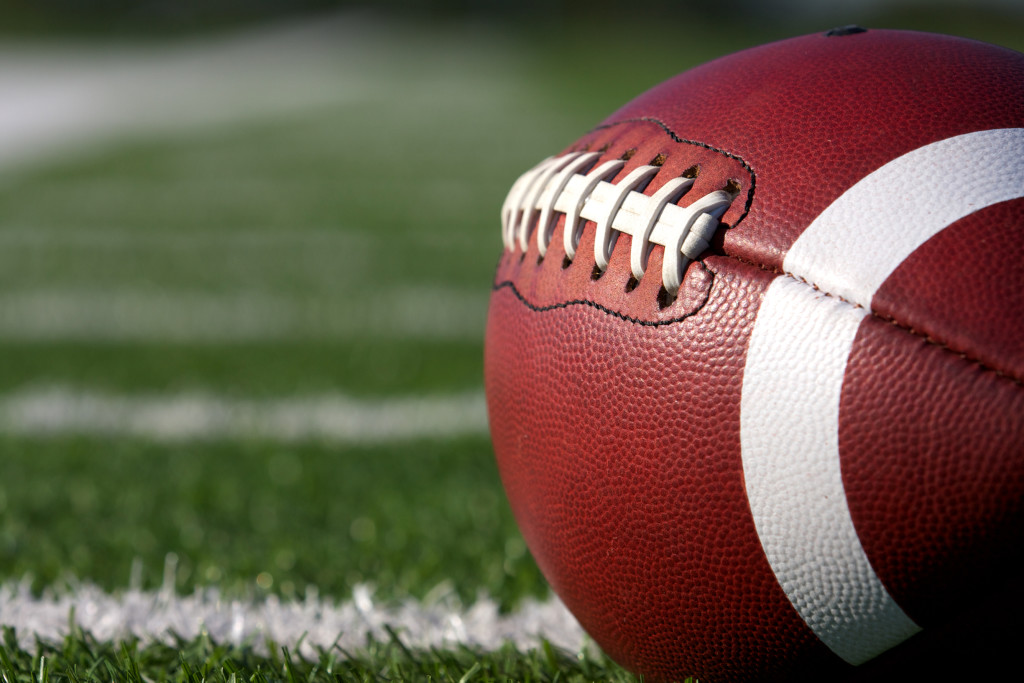
Each new football season is a time for celebration. Unfortunately we see too many stories about players’ misdeeds, and more troublingly, authorities sometimes looking the other way and enabling bad acts. Yet despite the negativity, many current and former players make great contributions to our communities. Numerous examples can be found in the finalist profiles for the NFL’s Walter Payton Man of the Year award. The assistance players provide particularly to former teammates illustrates how Americans assisted each other before our modern welfare state. But let’s consider some ways that players assist former teammates. For example, Juan Bautista graduated from medical school after playing special teams for Fresno State. Players with a chance to play professionally frequently drop classes after finishing their senior season to prepare for the NFL draft, and later may be unable to afford tuition. Dr. Bautista started a foundation to help former Fresno players complete their degrees. Miami coach Mark Richt recently started The U Network to help former Hurricanes. Networking connects players with former teammates and potential employers. Coach Richt had previously built such a network when coaching at the University of Georgia. Assistance can extend to teammates’ children. Alabama fans might recall the connection between Heisman Trophy winner Mark Ingram’s parents and Tide Coach Nick Saban. Mark Ingram Sr. played at Michigan State. Coach Saban was on the MSU staff, and while ensuring that players attended class, he met Ingram Sr.’s future wife Shonda. After playing in the NFL, Mark Ingram Sr. unfortunately ended up going to prison. And yet a football connection helped Mrs. Ingram keep her son on the right track and eventually led him to Tuscaloosa. Why is this relevant for welfare policy? It might be hard to imagine today, but America did not have a government welfare state until the New Deal. The 19th Century witnessed rapid economic growth, but America was not yet as rich as we are now, so hard times arguably had a greater impact on people than today. Americans still helped others, with organized aid supplementing individual and church-based assistance. University of Alabama historian David Beito has documented the assistance provided by fraternal societies like the Odd Fellows and Woodmen, who offered rudimentary life insurance. Many of these groups evolved from associations set up to assist families of workers killed in dangerous professions, like fishing and whaling. Voluntary groups assisted after natural disasters long before we had FEMA. Economist Emily Skarbek detailed how the Relief and Aid Society distributed millions of dollars of aid to and constructed temporary housing for victims of the Chicago fire. Pittsburgh’s leading citizens similarly assisted after the Johnstown Flood. Football players and fraternal orders helped individuals known to the donors, even if the connection was weak. For example, Miami alumni who never played football sent recruiters to The U Network’s job fair. We are more generous when we have a connection with the people needing assistance. A personal connection allows us to tell if external factors create a need for assistance. Americans have never liked giving alms to the irresponsible. Professor Beito, for example, describes how one 19th Century fraternal organization expelled “Drunkards” and members who played “Cards, Dice, or other Gaming” at meetings. Furthermore, we generally only assist those closest to us when poor choices have created distress. Do fraternal orders or the bonds of teammates provide an alternative to government welfare in modern America? Perhaps not. When community groups and churches provide assistance, persons without connections may not receive help. Government assists strangers and those lacking personal connections to benefactors. On the other hand, America’s welfare system, I think, has always been based on compassion and not a right to assistance. In recent decades, many governments have contracted with nonprofit organizations to deliver social services. In part, this is because nonprofits often provide help more effectively and compassionately than government bureaucrats. So perhaps we are using our past to chart a new course for welfare. ••• Daniel Sutter is the Charles G. Koch Professor of Economics with the Manuel H. Johnson Center for Political Economy at Troy University and host of Econversations on TrojanVision. The opinions expressed in this column are the author’s and do not necessarily reflect the views of Troy University.
Alabama football starts atop AP poll for 2nd straight year
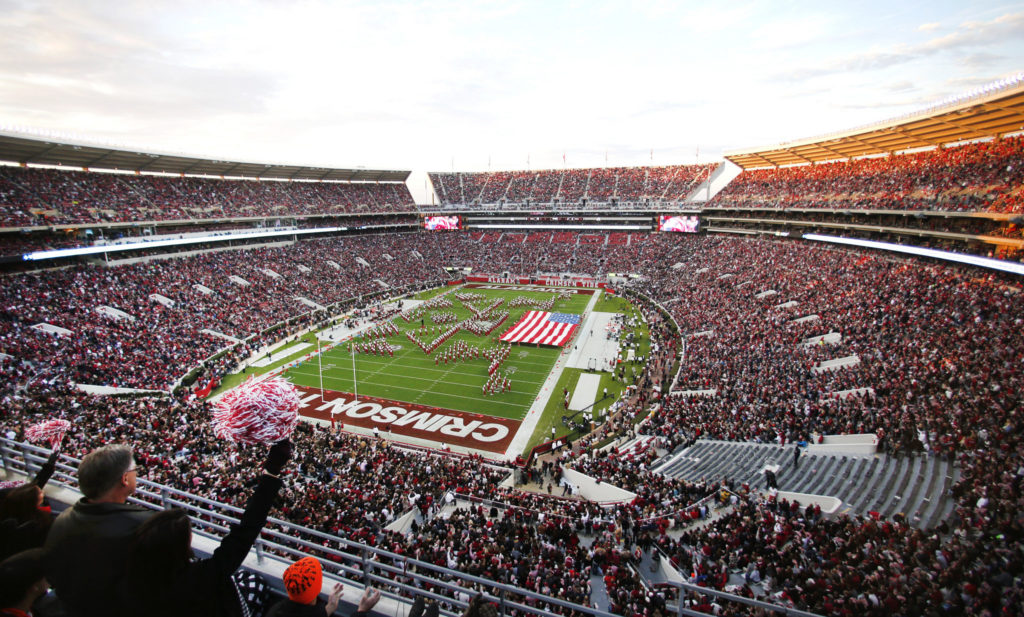
Alabama is No. 1 in The Associated Press preseason college football poll for the second straight season and third time in five years. The Crimson Tide, coming off a last-second loss in the national championship game that left it No. 2 to Clemson in the final Top 25 of 2016, received 52 from a panel of 61 media members. Ohio State was No. 2, edging out No. 3 Florida State and preventing the first 1 vs 2 opening game since the AP preseason poll began in 1950. Alabama opens the season against the Seminoles in Atlanta on Sept. 2, just the fourth opener involving top-five teams and the first pitting teams ranked in the top three. Southern California starts the season at No. 4. Defending national champion Clemson begins the post-Deshaun Watson era at No. 5. Click here for full list of rankings. Republished with permission of The Associated Press.
Will a Heisman longshot prevail for third straight season?
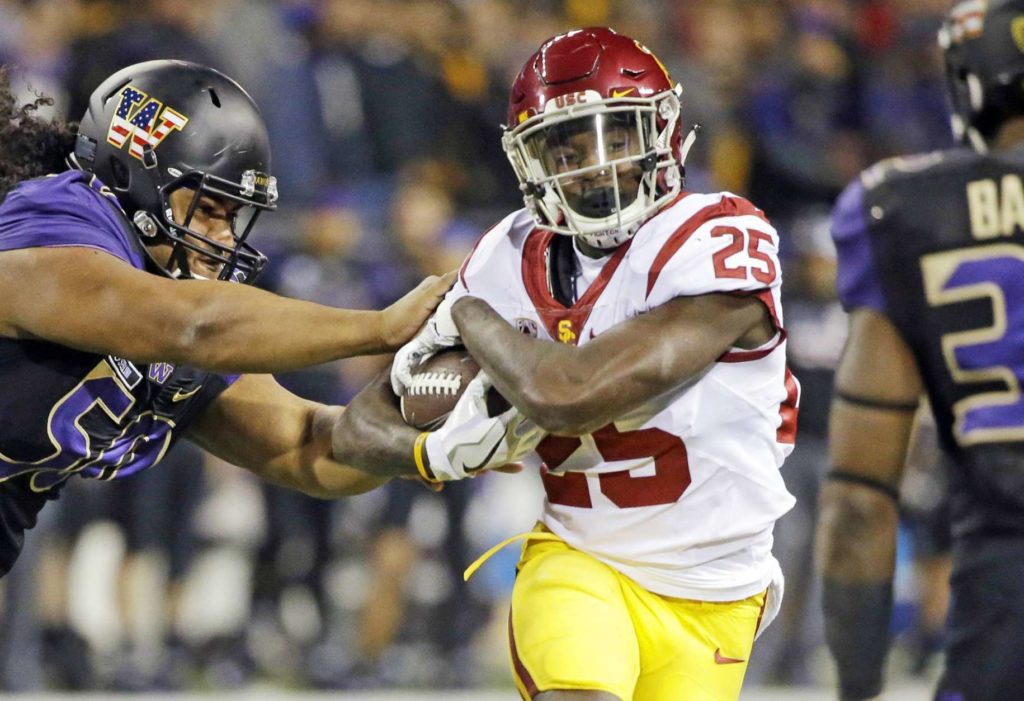
Preseason longshots the past two years have ended up winning the Heisman Trophy. Last year, Louisville’s Lamar Jackson had 50-1 odds when practices started. Jackson quickly became the odds-on favorite though after his performance in the first three games where he accounted for 18 touchdowns, including 10 rushing, and became the youngest player to win the award. Jackson’s 4,928 yards of total offense is second in Heisman history to the 5,022 yards racked up by BYU’s Ty Detmer in 1990. Two years ago Alabama’s Derrick Henry was at 25-1 in the preseason before setting a Southeastern Conference single-season rushing record with 1,986 yards and becoming just the second running back since 1999 to win. Will this be the third straight season that a dark horse overtakes the field? If you are looking at possible longshots, here are six to keep in mind: DERRIUS GUICE, RB, LSU With Leonard Fournette in the NFL, Guice has the backfield to himself. The 5-foot-11, 218-pound junior still ended up leading the SEC in rushing yards (1,387) and touchdowns (15) despite splitting time with Fournette. Guice had eight carries of 30 yards or more last season, including a 96-yard touchdown against Arkansas that is the longest carry in school history along with an LSU single-game record 285 yards in a Thanksgiving night win over Texas A&M. DERWIN JAMES, S, FLORIDA STATE James missed most of last season due to a knee injury but has been touted as the best defensive player in college football. James (6-3, 211) will draw comparisons to former Michigan standout Jabrill Peppers, who was a Heisman finalist last year. James has been used as a rush end, linebacker and safety on defense, punt return and will see action on offense at wide receiver. He is trying to become the second defensive player to beat the odds. RONALD JONES II, RB, USC There is already plenty of Heisman buzz around the Trojans due to quarterback Sam Darnold, but Jones does have a chance to possibly generate some headlines of his own and possibly upstage Darnold. The 6-0, 200 pound junior running back averaged 6.0 yards per carry and had three touchdown runs of 60 yards or more last year. He won’t get 300-plus carries — which seems to be a prerequisite for consideration from voters — but he can show his ability as a playmaker as both a runner and receiver that could propel him into contention. TRACE McSORLEY, QB, PENN STATE This is like USC in reverse since the running back (Saquon Barkley) is receiving more attention. McSorley, a 6-0, 202-pound junior, could be the best quarterback in the Big Ten. In his first year as the starter last season he threw 25 touchdowns and only five interceptions. He also comes into the season with momentum after big performances in the Big Ten championship game and Rose Bowl. MASON RUDOLPH, QB, OKLAHOMA STATE The senior is not receiving as much attention as Oklahoma’s Baker Mayfield, but Rudolph (6-5, 230) is one of only two Power Five quarterbacks coming back after passing for 4,000 yards. He has one of the more talented receiving duos in the Jalen McCleskey and James Washington. With the Cowboys coming off consecutive 10-win seasons, they could contend for the Big 12 title, which would raise Rudolph’s profile even more. JARRETT STIDHAM, QB, AUBURN Could Stidham take the same path as Cam Newton? Transfer in, flourish under Gus Malzahn’s offense and win the Heisman. The sophomore was one of the top dual-threat quarterbacks when he was recruited by Baylor in 2015 and had immediate success with 1,165 yards passing and 12 touchdowns. Stidham (6-3, 214) transferred to junior college last year after coach Art Briles was fired and could be Auburn’s fourth Heisman finalist in the past eight years. Republished with permission of The Associated Press.
Richard Shelby places friendly wager on Peach Bowl
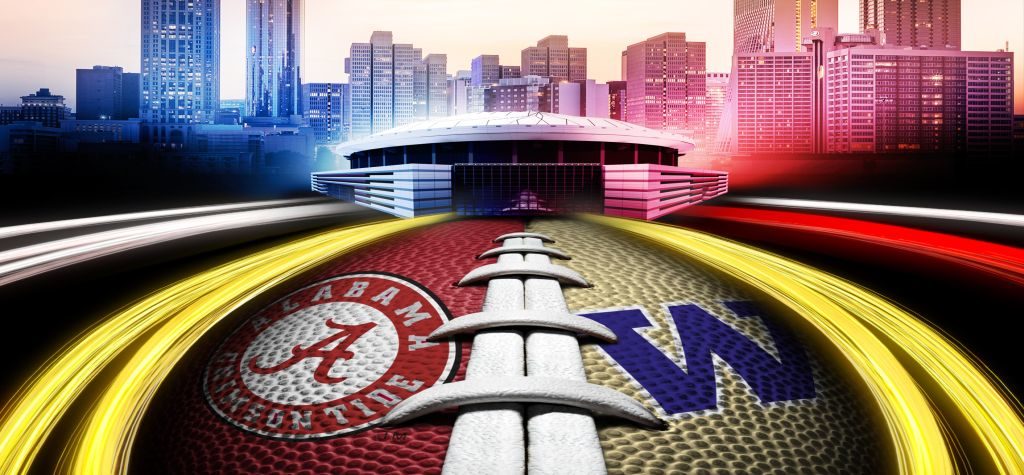
In advance of Saturday’s Peach Bowl College Football Playoff Semi-final game between the #1-ranked University of Alabama Crimson Tide and the #4-ranked University of Washington Huskies, two Senators have made a friendly playoff bet, with the wager being hometown eats. Alabama’s senior U.S. Sen. Richard Shelby and Washington’s Democratic Sen. Maria Cantwell announced a the friendly bet — should the Huskies win, Shelby will provide two racks of ribs from Dreamland BBQ in Tuscaloosa, Ala. for Cantwell’s office. Should the Crimson Tide win, Cantwell has promised to deliver salmon to Shelby’s office. Shelby is confident in a Crimson Tide victory, accrediting the team’s assumed preparation to famed football coach Nick Saban. “These two teams should be extremely proud of their accomplishments so far in the season,” said Shelby. “I have no doubt that Coach Saban will have our team prepared and that they will represent our state well during this match-up. I’m pleased to enter into this friendly wager with my colleague, and I’m confident that the Crimson Tide will prevail and take us into another national championship game.” Cantwell hopes Shelby’s wrong. “This will be one of the best games of the year,” said Senator Cantwell. “There’s no doubt that Alabama has a powerhouse program, but I’ll be cheering the Dawgs on to victory.” The Chick-Fil-A Peach Bowl, will take place on Saturday, December 31, at 3:00 p.m. ET in Atlanta, Ga.
Athletes take issue with Donald Trump over “locker room talk”

CJ McCollum, Jamal Crawford and Jacob Tamme are among current and former professional athletes on social media to criticize Donald Trump‘s characterization of his predatory, sexual comments about women from a 2005 video as “locker room talk.” Trump’s campaign described his remarks as “locker room banter” in a statement Saturday, and the Republican presidential nominee repeated the line multiple times Sunday during the presidential debate with Hillary Clinton. In the tape, obtained by The Washington Post and NBC News, Trump describes trying to have sex with a married woman and brags about women letting him kiss and grab them because he is famous. “When you’re a star they let you do it,” Trump says. “You can do anything.” He adds seconds later, “Grab them by the p—-. You can do anything.” “I haven’t heard that one in any locker rooms,” McCollum wrote on Twitter in a response to a tweet from Crawford. McCollum plays for the NBA’s Portland Trail Blazers and Crawford plays for the Los Angeles Clippers. I haven’t heard that one in any locker rooms https://t.co/Ci8NXOgFcI — CJ McCollum (@CJMcCollum) October 10, 2016 Please stop saying “locker room talk” — Jacob Tamme (@JacobTamme) October 10, 2016 It’s not normal. And even if it were normal, it’s not right. https://t.co/RQUWJJBSTn — Jacob Tamme (@JacobTamme) October 10, 2016 Dodgers pitcher Brett Anderson , Chiefs wide receiver Chris Conley and retired NFL players Donte Stallworth and Chris Kluweoffered similar condemnations. Have I been in every locker room? No. But the guys I know and respect don’t talk like that. They talk about girls but not like that. Period. — Chris Conley (@_flight17_) October 10, 2016 “Locker room talk” ? — Donté Stallworth (@DonteStallworth) October 10, 2016 Yes. That’s not locker room talk. https://t.co/egzC03ooQA — Chris Kluwe (@ChrisWarcraft) October 10, 2016 As an athlete, I’ve been in locker rooms my entire adult life and uh, that’s not locker room talk. — Sean Doolittle (@whatwouldDOOdo) October 10, 2016 Republished with permission of the Associated Press.
Gary Palmer applauds former Alabama football player, 49ers lineman Quinton Dial for standing up for America

Less than 24 hours after the 15th anniversary of the Sept. 11 terrorist attacks, football fans at Levi’s Stadium in Santa Clara, California paused for a moment of silence prior to the San Francisco 49ers-Los Angeles Rams regular-season opener as “The Star-Spangled Banner” played in the background. There, 49ers quarterback Colin Kaepernick continued his ongoing protest against what he deems are wrongdoings against African-Americans and minorities in the United States by kneeling during the playing of the national anthem. Kaepernick’s refusal to to stand during the playing of the tune has ignited debate across the sport of football, and beyond about patriotism, protest, and professional sports, rubbing many Americans the wrong way. In stark contrast to Kaepernick was his 49ers teammate, former Alabama football player and current 49ers defensive lineman Quinton Dial. During Monday night’s game he stepped off the sideline and held the American flag with members of the armed forces during the playing of the National Anthem. Alabama 6th District U.S. Congressman Gary Palmer calls Dial’s act courageous. “Last night Quinton Dial took a courageous stance in support of America and our military,” said Palmer. “While his teammate protested the national anthem by kneeling as it played, Quinton proudly stood by members of our armed forces and helped them display the American flag for all to see. I applaud Quinton’s actions and his pride in our great nation. I’m proud to call him my fellow American.”
Daniel Sutter: Football practice facilities and the cost of health care
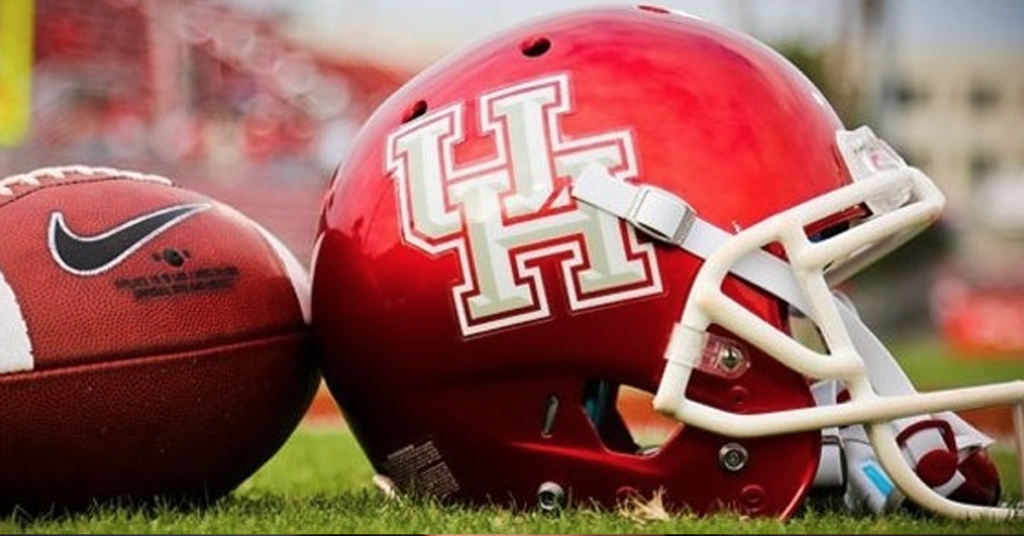
The University of Houston will break ground soon on an indoor football practice facility, which hardly seems like a story of economic interest. It turns out practice facilities illustrate a common confusion, even among economists, about costs. As Nobel Prize-winning economist James Buchanan explained in Cost and Choice, goods and services have no cost independent from many choices we make. Houston is vying for a spot in the Big 12 Conference, which reportedly will expand soon. As a lifelong college football fan who has worked in higher education my whole career, I find conference realignment fascinating. Houston is spending over a quarter of a billion dollars upgrading its athletics facilities to Power 5 conference standards merely to strengthen its Big 12 prospects. A season-opening win over Oklahoma certainly helps make the Cougars look ready for the Big 12 on the field. Houston’s upgrades include a $20 million indoor practice facility, which caught my attention. When did indoor practice facilities become a necessity? Such facilities are certainly common now in Power 5 conferences; with Florida recently announcing plans, all of the SEC schools will have indoor facilities. But college football was played for decades without indoor practice fields. Indoor practice facilities contribute to the escalating cost of major college football. Should this be so? Here’s where choice comes in. The facilities are clearly useful, allowing regular practices during inclement weather. But teams have other options, like practicing outdoors if it isn’t raining too hard, or watching film. Currently the Cougars will take buses to the Houston Texans’ indoor facility, which hardly seems like the end of the world. Once a school decides to build a facility, more choices must be made. Is a full 100-yard field needed, or only a 50-yard field? Should the roof be high enough to allow punting? Should the facility be climate controlled? Choices about dozens of other factors further shape football costs, like the number and salaries of the coaching staff and graduate assistants, the quality of the weight and locker rooms, and so on. No laws of nature tell us exactly what must be used to field a football team. Expenditures can be calculated for the choices actually made, but would differ if other choices were made. Sun Belt conference schools like Troy make different choices than SEC schools, and field teams for much less. The same principle applies to other goods and services. Take the case of health care, whose “cost” has been rising faster than inflation. Again, incurred costs reflect choices. How frequently should people have checkups? What blood tests should be performed annually? When should colonoscopies, prostate exams, and mammograms be performed? Should mental health care and chiropractors be covered? Costs have been rising, based on the choices we have made. These choices also reflect values. Houston Coach Tom Herman has used the line “charge it to winning” to justify extra expenses to the university’s athletics director. Administrators’ acceptance of this line reflects value judgments, first that the spending contributes to winning, and second that winning is worth the cost. Similarly, decisions about spending millions of dollars to save, extend, or improve the quality of lives also reflect values. Too many economists never learned Professor Buchanan’s lesson, and instead believe that THE cost of a hospital stay or operation exists. Consequently they believe if we diligently audit and monitor doctors and hospitals, costs can be controlled. This makes it appear plausible that the government can run Medicare and Medicaid without making choices about health care for us. Why does the economics of indoor football practice matter? When we change who pays the cost of medical care (or education, or anything else), we also typically change who gets to make decisions, since whoever pays the bills typically calls the shots. Changing who makes decisions changes the values applied. The idea of having others pay for us is inherently attractive. Paying for ourselves, however, is the only way to ensure that the choices reflect our values. ••• Daniel Sutter is the Charles G. Koch Professor of Economics with the Manuel H. Johnson Center for Political Economy at Troy University and host of Econversations on TrojanVision. The opinions expressed in this column are the author’s alone and do not necessarily reflect the views of Troy University.
Ronda Walker: Schadenfreude
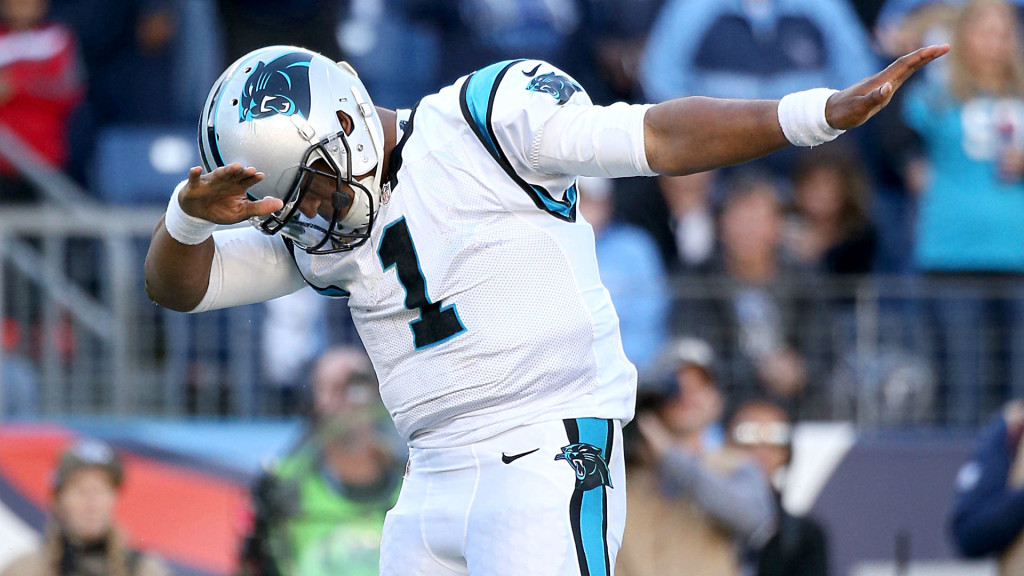
We take pleasure in the pain of others, especially the pain of the rich and famous. I cannot explain why humans react this way, but scientific studies have proven through MRI and other imaging that the human body experiences positive physiological reactions when we see others fail, especially if those failing are rich or famous. Imagine a handsome, wealthy, superstar athlete that plays for the team you don’t like. How easy is it for you to hate that guy? You did not even have to be a Denver Bronco super-fan to gloat at the sight of Cam Newton getting sacked repeatedly in the Super Bowl. You did not even have to be an Alabama fan watching a former Auburn Tiger fail to experience euphoria at the sight of a sulking Newton mumbling one-word answers at the post game presser. You just need to be human. While Newton’s stumble from the top is one of the most explosive issues on social media the day after Super Bowl 50, it will go down in the annals of history as just another example of the mighty falling, it happens every day. You have probably forgotten all about it, but it was just a few years ago after a tough loss in Super Bowl XLIV that losing QB Peyton Manning chose not to shake hands with rival QB Drew Brees, instead Manning hurried off the field sulking, and extremely frustrated with a painful loss. For an athlete to become overwhelmed with disappointment and frustration in the wake of a mega loss is both understandable and forgivable. What is neither understandable nor forgivable is the unapologetic hatred and vitriol people express toward those who tried, yet failed. Did Newton handle the loss well? Absolutely not, but please do not give me the line that anyone should be above letting their emotions show during tough times. Imagine walking out of your divorce attorney’s office to be greeted by local news reporters asking you how you are feeling? How did this happen? What went wrong? Or when you lost the big client at work or when you got a side stitch and could not complete the marathon after months of training. Imagine your greatest failure being fodder for the nightly news, for the local blogs, or the neighborhood tabloid. You would be speechless and might even throw a punch or two. You would certainly be furious at the audacity of anyone to kick you while you are down. Ironically the loudest chest pounding and harshest finger wags come from those who have actually never tried much of anything. Perhaps it is our own sense of personal failure or disappointment that makes it so easy for us to turn on one another. You don’t see Peyton Manning running down Cam Newton today; in fact Manning said Newton was extremely humble when he congratulated him for his win. Fame, wealth, and notoriety while part of the American Dream, are far from an American right, thus the battle between the few haves and the masses of have nots. We are jealous of those few who have made the ultimate achievements and we compare their lives with those of our own. Our mediocre life in Middle America is not what we dreamt it would be. Perhaps we did not take risks, work hard enough, or take a leap of faith when great opportunities presented themselves and we wish we had. When we sit in our den and watch a football game on TV and rejoice in the failures, mistakes, and missteps of others it says a lot more about us than it does about those on the screen. Schadenfreude is a German word that literally means harm-joy. It refers to the feeling of joy or pleasure when one sees another fail or suffer misfortune. You’ve experienced it even if you are horrified to admit it. It does not only relate to our attitude toward sports figures, although that might be it’s most obvious application. Politics is a taboo subject at social functions because it conjures such deep and passionate opinions and emotions. We watch men and women we have never met debate issues that we do not fully understand and we actually have deep hatred in our heart for some of them. It’s sick really, but it is the American way. Do we revel in the misery of others because we are jealous of them or is it because we are just so thankful their misery did not befall us? My guess is it is a combination of those reasons. University of Alabama football fans hate Cam Newton because Cam played for their greatest rival Auburn University and he enjoyed tremendous success. It’s really that simple, but most Alabama fans will not admit that. Instead they will say Newton is an arrogant, self-serving player who made some bad choices in his younger days and deserves to be hated. But we all know if Cam Newton had donned the crimson and white, it would be the Auburn fans rejoicing today. The fact is the Bronco defense served as a salve to Alabama fans still nursing old wounds. It’s not Cam Newton Alabama fans hate, they don’t even know Cam Newton, they hate anything to do with Auburn. Likewise, it’s not Hillary Clinton or Ted Cruz people hate – we hate their politics, what we think they stand for, but that differentiation is lost during the attacks, and we go from disagreeing with an opinion to hating an individual. Nothing has made our collective schadenfreude so ugly as our access to social media. We open our Twitter and Facebook each morning, or we tune into the 24/7 news cycle and we are bombarded with angry, hateful, critical speech and images. From the safety of their momma’s basement, unemployed middle-aged men condemn the decisions and actions of others. Operating under a pseudonym, young college kids with more arrogance than common sense pound out berating comments under every article they read online. Behind
Roll Tide — Alabama Senate passes resolution commending university’s football victory
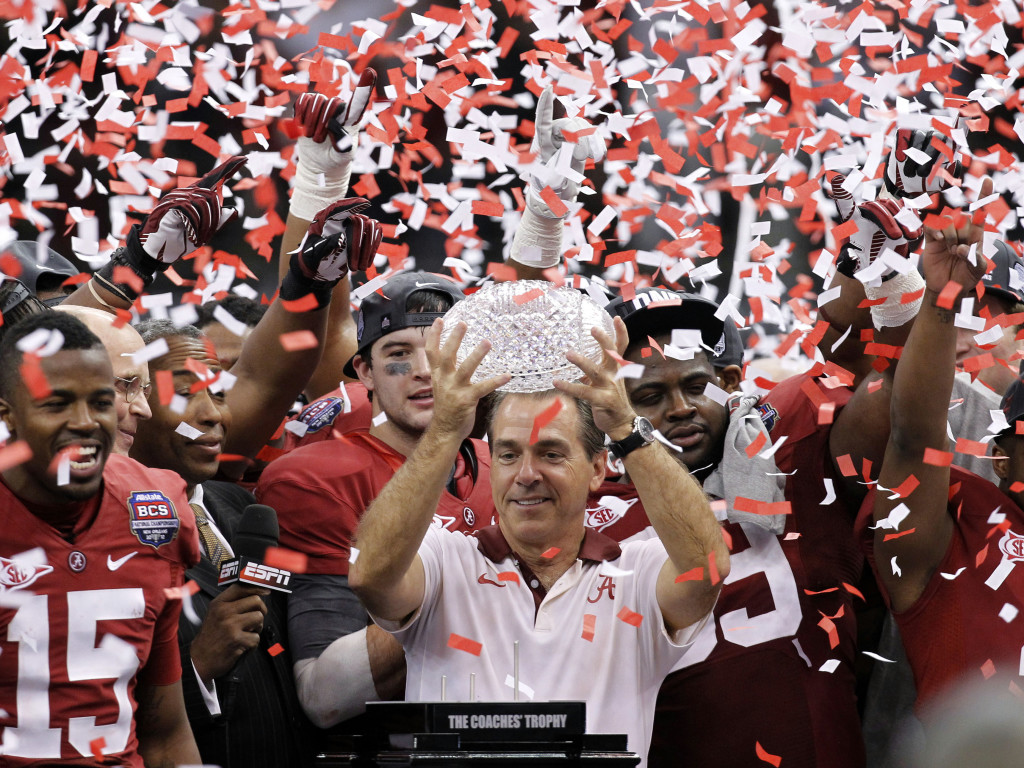
The Alabama Senate Tuesday passed SJR4, which sought to “most highly commend” the University of Alabama football team on winning the 2015 National Football Championship game in January. The resolution, which was unanimously resolved by both Houses, states that the Crimson Tide “showed incredible resourcefulness and resilience” in its 16th championship victory and earned “the right to be proclaimed the number one football team in the nation.” Citing that the victory “was truly a team effort.” A copy of the resolution will be presented to the university for display.
Daniel Sutter: Innovation and new football jobs

With football season in full swing, we should recognize some new ways that people can earn a living from football. The new jobs are made possible by the tens of millions of Americans who enjoy college and pro football, and the jobs do not require the athletic ability to play the game. Passionate college football fans like to follow their favorite teams year-round. Recruiting high school players is integral to the success of college teams, and highly ranked recruiting classes often predict future victories. Consequently hard core fans will want news about top high school players, their campus visits, and where they might go. Several national services have emerged to supply this news, both directly to fans and through partnerships with sports networks. The best known services are Rivals.com and Scout.com, which each operate networks of around 300 recruiting experts across the country. Rivals was established in 1998 and sold to Yahoo in 2007 for an estimated $100 million, indicating the profitability of recruiting news. Fantasy football allows NFL fans to enjoy the game even more. Over forty million Americans play, most in leagues with friends or coworkers. Many take the competition seriously enough to pay for analysis and advice. The Fantasy Sports Trade Association estimates that fantasy football products had $1.67 billion in sales in 2012. This allows fantasy experts to sell their services, either directly to players, or by providing content for websites hosting leagues. One day leagues offered by websites like FanDuel and DraftKings provide a new dimension. These tournaments involve play for cash among players who do not know each other. Scaling up participation allows for top prizes of $1 million or more each week. The Unlawful Internet Gambling Enforcement Act of 2006 classified fantasy sports as games of skill and thus legal, allowing this business to take off. Cash play further increases demand for experts’ knowledge and allows use of this expertise for large pay days. FanDuel and DraftKings have been caught up in “insider trading” allegations in the past several weeks, which may or may not slow their rapid growth. Technology and economics have enabled these new opportunities. The most significant has been the internet. College football magazines pre-date the internet, but today we have access to more information, more quickly, and at a lower cost. Experts’ websites allow them to aggregate modest amounts of money and attention (which translates into advertising revenue) from hundreds of people to earn a living. Websites able to host leagues have tremendously reduced the cost to friends of organizing a league, which previously involved recording statistics and making calculations by hand. The emergence of hundreds of TV channels with cable and satellite has led to narrowcasting and specialty networks. The first and most famous sports network is ESPN, but college conferences like the SEC and Big Ten now have their own networks. Specialized networks increase the audience for detailed recruiting news. NFL Sunday Ticket allows fantasy players to watch their NFL players in action. Sports radio allows experts to showcase their knowledge and direct listeners to their websites. Podcasts and YouTube allow experts to broadcast content to potential customers. A rising standard of living helps fans and fantasy players, many of whom are upper middle class, pay for specialized information. They will pay a $50 annual subscription fee to dominate their league or be the first to know that their alma mater just landed a star recruit. A prosperous economy also helps stake the experts in business. Providing information about a game might strike some people as frivolous and economically insignificant. Yet all goods and services have value because people are willing to exchange their money for them. Most value in our economy comes from activities which enrich and not just sustain our lives, so the value creation here is real. Jobs like college football recruiting guru or fantasy football advisor allowing die-hard fans to earn a living from their obsession might seem too good to be true. Americans have been enjoying football for decades, with top players earning millions. Innovation continues to grow this enjoyment, and now people who could not even play in high school can earn a living from football. Daniel Sutter is the Charles G. Koch Professor of Economics with the Manuel H. Johnson Center for Political Economy at Troy University and host of Econversations on TrojanVision.
This fall, Jeb Bush bridges two great American institutions: politics and football
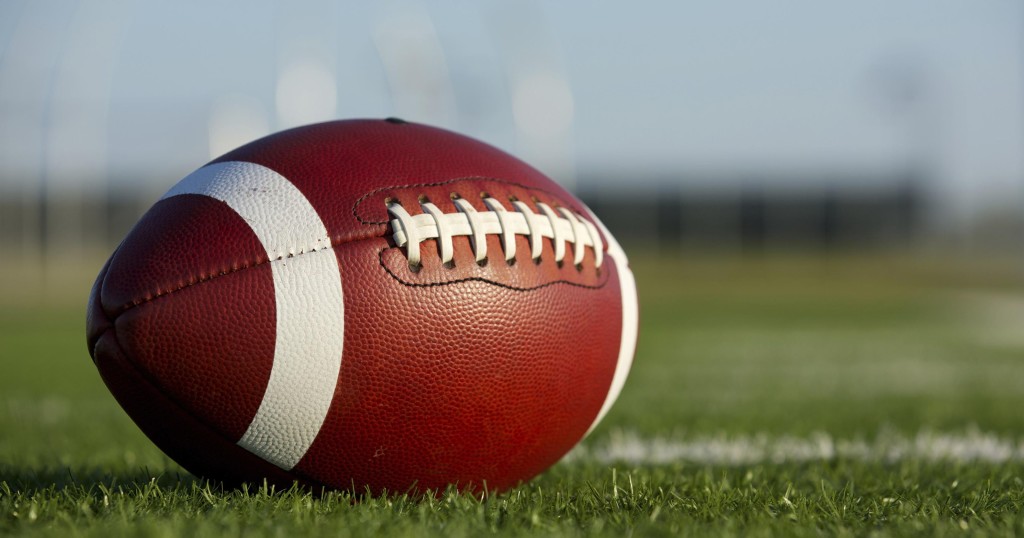
As fall arrives, so does two all-American traditions — football and politics. And with the 2016 presidential race in full swing, candidates are beginning to stake ground in both fields. On Saturday, Republican candidate Jeb Bush takes his White House ambitions to Athens, Georgia for the game between the Carolina Gamecocks and the Georgia Bulldogs. Bush will attend a tailgate party hosted by the College Republicans of the University of Georgia. The Gamecocks, underdogs at 1-1, have the added benefit of coming from South Carolina, a key early primary state. The Bulldogs are undefeated at 2-0. On his campaign website, Bush rolled out a schedule of four football-related appearances, as well as the formation of a ten-member Southeastern Conference Advisory Committee. The committee is part of an effort “bring some fun” to the process and drum up grassroots support ahead of the March 15 “SEC primary.” ABC News reports that Right to Rise, the super PAC behind Bush, has been looking into advertising rates for many of the SEC primary states, including Ohio, Missouri and Florida. As governor, Bush also led Florida, another SEC state. “Come meet Jeb on the field,” Bush’s website says, “learn how you can get involved and maybe even take a few selfies.” On Oct. 10, Bush will be at the Tennessee vs. UGA game in Knoxville; he will then go Tuscaloosa, Alabama for the LSU and Alabama Crimson Tide rivalry Nov. 7. Later in the month, Bush will be at the Ole Miss Rebels vs. Mississippi State Bulldogs on November 28 in Starkville, Mississippi. Of course, Bush is not the only one linking football and politics. Four Republican candidates — Donald Trump, Scott Walker, Marco Rubio and Rand Paul — attended a Sept. 12 GOP tailgate event for the Iowa vs. Iowa State match-up, an attempt boost their ground game by appealing to the everyday American football fan/voter.
UAB president: University bringing football back in 2016

UAB President Ray Watts said Monday he is bringing the football program back as early as 2016, reversing a decision to shut it down because it was too expensive. Watts cited renewed financial commitment from supporters, students and the city as reasons for the change of heart. He said donors have pledged to make up the projected $17.2 million deficit over the next five years if football is restored,. Watts told The Associated Press he decided on Monday morning to reverse the earlier decision after meetings with UAB supporters continued through the weekend. “The biggest single difference is that we now have tangible commitment for additional support that we never had before,” Watts said at a news conference. In addition to reinstating football, Watts said Monday that he was also bringing back bowling and rifle. The study commissioned by the university was based on the programs being brought back in 2016. However, new athletic director Mark Ingram stopped short of guaranteeing 2016, saying only that the goal is to bring football back as soon as possible. Watts cut the programs last December after UAB commissioned a report saying it would cost $49 million over five years to field a competitive football program, generating both a groundswell of criticism for the decision and a rallying of financial support for the Blazers program. The president said UAB has dropped an indoor practice facility from the equation since the initial report, and has raised about 10 percent of the estimated $12.5 million to $14.5 million needed for a turf practice field and new fieldhouse. The December decision left players looking for teams and stirred fans, student and faculty groups to issue no-confidence votes against Watts. “This was a very difficult decision,” he said. “It broke our hearts to make that decision, and we are sorry for any consequences of that. But we are excited today that our community and supporters have come together. Had we not made that decision, which was based on sound information, that we wouldn’t be where we are today. We have never seen this level of support. It has been a painful process at times but it has been a process that has brought us to a new day.” UAB commissioned College Sports Solutions to review the initial report by CarrSports Consulting. The numbers were similar minus the indoor facility. Watts also said UAB’s cost of attendance could be about half the initial projected $5,000 per athlete, based on other Conference USA schools. The first season’s College Football Playoff payout also was higher than UAB had projected. Watts said that the initial projections “showed there was no way for us to cover that unless we took away from education and research and health care.” Watts said UAB sent documents to C-USA and NCAA notifying them of his decision, but he makes it clear UAB plans to remain in the league and play at the FBS level. Without football, UAB would have likely not have remained in C-USA, which has a bylaw requiring members to field football programs. C-USA Commissioner Britton Banowsky said members had not wanted to change the rule because “football is something that is critical to our long-term success and part of our core as a conference.” “It didn’t really come as a great surprise, but we’re very pleased with the decision to bring back football,” Banowsky told The AP. “As a conference, we’re committed to football so we welcome the good news that UAB football has been given another chance.” UAB will cap its subsidizing of athletics to $14.49 million for each of the next five years, about $200,000 less than the university paid in 2014. The City of Birmingham and UAB’s National Alumni Society have each pledged contributions to athletics while student government leaders will raise student fees. Those total $5.3 million with the balance of money coming from private donors. One thing that’s not on the table: UAB building an on-campus stadium to replace aging Legion Field. Watts said that’s up to the city and community to fund. “We will be happy to play in any new, modern facility that the city might choose to build,” he said. “We leave the specific type of facility and the exact location up to the mayor and city leaders and community leaders.” Now comes a huge rebuilding process on the field. Many of the players have moved onto other programs, leaving Clark and his staff to find recruits for 2016. Ingram said bringing football back “will bring a lot of renewed excitement around this program, that’s from top to bottom.” Clark issued a statement saying it was a relief that UAB football was being resurrected. “This is a critical first step toward UAB football’s new path,” Clark said. “It takes tremendous commitment and support to run a successful football program. We have a lot of work to do but we start anew today!” Republished with permission of The Associated Press.


